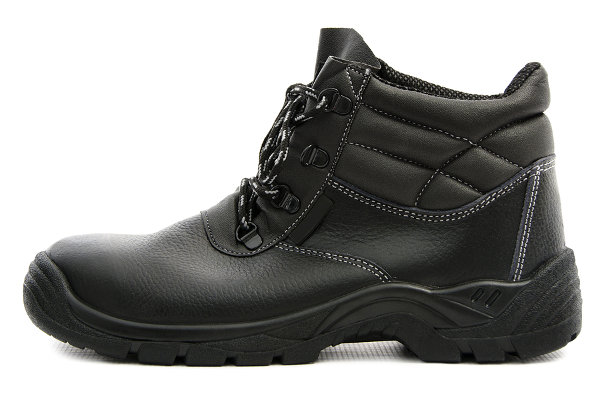Safety Shoes

Foot trouble can be as painful as back trouble, and it can be just as restrictive as to what type of work you can do, too.
People used to complain about their bunions and corns hurting, but these complaints are less common today due to improved medical treatment and the better shoes now available.
To conform with what is fashionable, many of us still wear shoes that aren't comfortable or aren't safe. They have heels or soles that can easily cause a bad fall.
As important as our feet are to us, there are still many people who insist that they don't want to wear safety shoes because they are too ugly, too heavy, too uncomfortable, too expensive, and so on.
In reality, none of these complaints are justified. The safety shoes available today match most other shoes for comfort, appearance and in most cases, price too. So, really there are no valid excuses for not wearing safety shoes when the situation calls for it.
Actually, it's a good idea to wear safety shoes whether they are specified for your job or not. It is now recognized that safety lenses in glasses are important both on and off the job, and the same theory is gaining in popularity concerning safety shoes.
There are many types of safety shoes, the most common being the safety toe shoe. Then there are shoes that have flexible steel insoles to prevent punctures by nails, and there are metal instep guards, safety boots, plastic shoe covers and many others. All these features combat the crippling and common job injuries of smashed toes and feet and nail wounds.
As mentioned before, safety shoes can be both effective and comfortable and comfort certainly is a prime consideration for any shoes.
Condition of shoes is also important. Soles that are worn thin can be easily punctured by sharp objects or a painful bruise can result if you step on a stone.
Rundown heels can cause you to lose your balance and fall or perhaps turn your ankle. Shoe laces should not be too long, as obviously they create a tripping hazard.
If there is still any doubt about the virtues of safety shoes, the following excerpt from a safety shoe advertisement may clear it up:
Nobody can touch our shoes for smart, sharp, up-to-the-minute styling, combined with proven protective features like our patented steel toe caps, plus solid comfort features like soft grain leather ripples, sweat resistant linings, cushion heel pads and more".
Here's another advertising pitch:
"Now here's another addition to this popular line of instep protection. It features an eight-inch side zipper for easy off and on, nonconductive nailless sole construction. Additional comfort features include lining that resists mildew and bacteria and has a full cushion insole".
And finally this advertisement:
"Our shoes are the ladies' choice for safe, sure protection in those heavy-duty jobs women now fill. They are ruggedly built for protection and long wear".
Perhaps these statements are a little flowery, but basically they reveal some very good reasons why safety shoes are a good, practical buy.
But safety shoes, like other protective equipment, must be worn to be effective. So why take a chance on ruining a good thing, namely your feet? Wear safety shoes!
